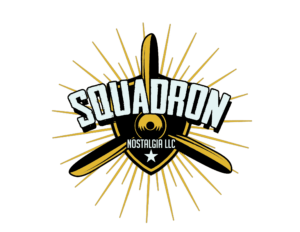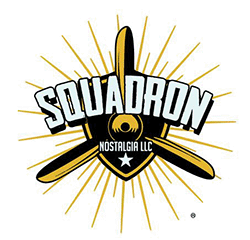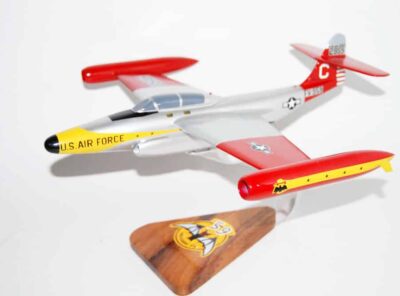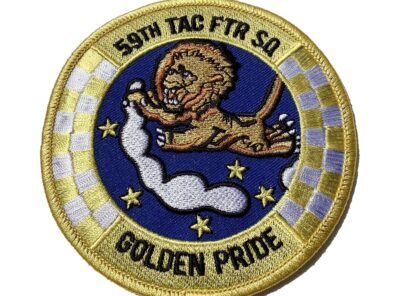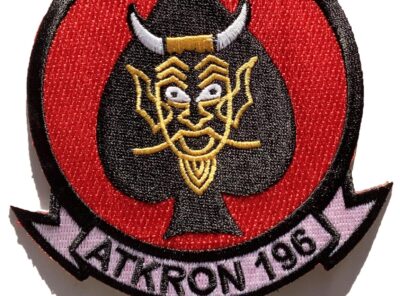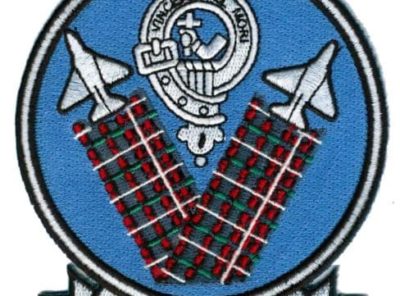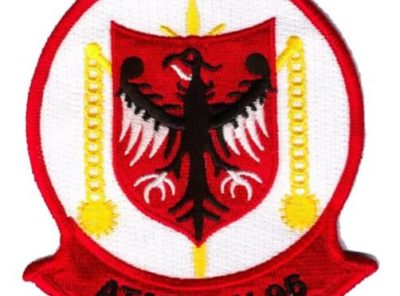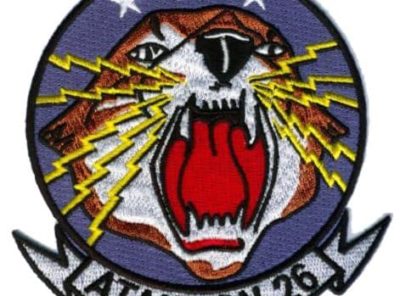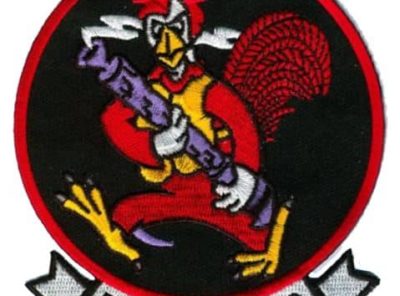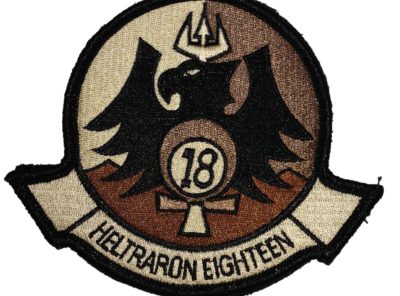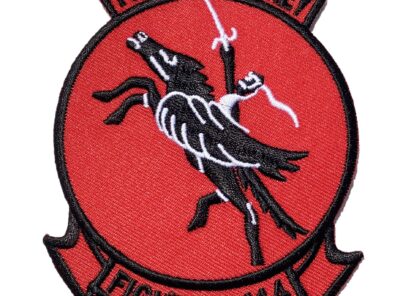Description
4-inch patch of the 59th Fighter Squadron Patch
World War II
The squadron was constituted as the 59th Pursuit Squadron (Interceptor) on 20 November 1940 and activated on 15 January 1941 at Mitchel Field, New York as part of the 33d Pursuit Group. The squadron trained on the Bell P-39 Airacobra but soon switched to the more modern Curtiss P-40 Warhawk. After the Japanese Attack on Pearl Harbor on 7 December resulted in the American entry into World War II, the squadron was moved to various bases to provide air defense for the East Coast, relocating to Groton Airport in Connecticut on 7 December, Glenn Martin Airport in Maryland on 15 December, and finally to Philadelphia Airport on 10 May 1942. Five days after moving to Philadelphia, the squadron was redesignated the 59th Fighter Squadron when all Air Force pursuit units became fighter units, and between May and June it was temporarily stationed at Paine Field in Washington to provide air defense on the West Coast.[3]
A P-40 pilot of the squadron holds up a finger to tell his crew chief that he has downed a German plane, Paestum airfield, 15 September 1943
On 12 October, the squadron and the 33rd Fighter Group left Philadelphia for loading aboard the escort carrier USS Chenango for Operation Torch, the Anglo-American invasion of North Africa, which began on 8 November. Two days later, the squadron flew into the French Port Lyautey Airfield,[4] relocating to Casablanca Airfield on 17 November.[3] It operated with Twelfth Air Force in the Mediterranean Theater of Operations until February 1944, providing close air support for ground forces, and bombing and strafing personnel concentrations, port installations, fuel dumps, bridges, highways, and rail lines. Took part in the reduction of Pantelleria and flew patrol missions while Allied troops landed after surrender of the enemy’s garrison. It also participated in the invasion and conquest of Sicily by supporting landings at Salerno, southern Italy, and the beachhead at Anzio.[5]
After moving to India in February 1944, the unit trained with Lockheed P-38 Lightnings and Republic P-47 Thunderbolts. It then moved to China where it continued training and flew patrol and intercept missions. Upon returning to India in September 1944, it flew dive bombing and strafing missions in Burma until the Allied campaigns in that area had been completed.[5]
From August 1946, the 33d Group served as part of the US occupation force in Germany, being stationed at USAFE airfields at Neubiberg and Bad Kissingen, operating P-47 Thunderbolts.[5]
Strategic Fighter Escort Squadron
Returned to United States in August 1947, being assigned to Strategic Air Command (SAC). Assigned administratively to Andrews Field, Maryland, then being organized at Roswell Army Air Field, New Mexico on 16 August 1947 as part of Eighth Air Force. Equipped with North American P-51D Mustangs. In June 1948, transitioned to the first-generation Republic F-84C Thunderjet.
Air Defense Command
F-89s of the 59th Fighter-Interceptor Squadron at Goose Bay in the 1950s
59th Fighter-Interceptor Squadron McDonnell F-101B-90-MC Voodoo 57-308 Kingsley Field, Oregon May 1969
Reassigned to the Air Defense Command (ADC) First Air Force on 1 December 1948. With the new ADC assignment, moved to Otis Air Force Base, Massachusetts on 16 November 1948 as part of the 26th Air Division. In February 1949, transitioned to North American F-86A Sabre day interceptor with the F-84s being sent to Republic Aircraft for refurbishment and reassignment to Air National Guard units.
The squadron moved to Goose Air Base, Labrador under Northeast Air Command (NEAC) on 28 October 1952, assigned to NEAC’s 64th Air Division, headquartered at Pepperrell Air Force Base. The 59th first operated the Lockheed F-94B Starfire all-weather night fighter interceptors with a detachment at Thule Air Base, subsequently the Northrop F-89 Scorpion jet interceptors from the airfield, assisting in the air defense of the region. When SAC received jurisdiction of the United States facilities at Goose in 1957 with the inactivation of NEAC, ADC took over the USAF atmospheric defense forces (including the 64th Air Division). The 59th was upgraded to the Convair F-102A Delta Dagger supersonic interceptor in 1960. It continued defensive patrols over the region.
Moved to Bergstrom Air Force Base, Texas in 1967 and was upgraded to the McDonnell F-101B Voodoo and the F-101F operational and conversion trainer. The two-seat trainer version was equipped with dual controls, but carried the same armament as the F-101B and were fully combat-capable. Moved to Kingsley Field, Oregon in 1968 then inactivated on 31 December 1969 as part of the drawdown of ADC interceptor bases, the aircraft being passed along to the Air National Guard.
Tactical Air Command
Reactivated at Eglin Air Force Base, Florida in 1970 and equipped with McDonnell F-4 Phantom IIs. Supported the Tactical Air Warfare Center in weapon systems evaluation program tests from January–December 1973, and periodically thereafter until July 1978. Aircrews ferried F-4Es to Israel in October 1973. The 59th augmented intercept defense forces of North American Air Defense Command (NORAD) beginning 1 January 1976 – 15 January 1979 and 4 January 1982 – 5 April 1982. In 1979, “The Golden Pride” traded in their last F-4s for the McDonnell Douglas F-15 Eagle. Later, they provided personnel and equipment to fly combat air patrols and air intercept missions for contingency operations in Grenada from October–November 1983, and Panama December 1989 – January 1990. (I won’t change the written information, but the 59th Tactical Fighter Squadron supported NORAD operations and pulled alert at Eglin (I was first in the 58th TFS and then for about 6 months in the 59th TFS.) I left the 59th TFS in February 1979.
Desert Storm
The 59th did not deploy during Operations Desert Shield or Desert Storm. However, some of their personnel deployed with the 58th Tactical Fighter Squadron from 26 August 1990 – 12 April 1991, to help support manning, and to provide some experience. One of the 59th’s members who deployed to the Gulf was the late Captain Rhory “Hoser” Draeger, who, on 26 January 1991, shot down a MiG-23, while flying an F-15C. Personnel and aircraft continued rotations to Saudi Arabia to protect coalition assets and to ensure that Iraq complied with treaty terms. Continued deployments to Saudi Arabia, Canada, the Caribbean, South America, Jamaica, Iceland, Italy, and Puerto Rico and participated in various operations until inactivated in 1999.
Operational Test & Evaluation
Reactivated at Nellis Air Force Base in 2004 assuming current mission.
Lineage
Constituted as the 59th Pursuit Squadron (Interceptor) on 20 November 1940
Activated on 15 January 1941
Redesignated 59th Fighter Squadron on 15 May 1942
Redesignated 59th Fighter Squadron, Two Engine on 8 February 1945
Inactivated on 8 December 1945
Redesignated 59th Fighter Squadron, Single Engine on 17 July 1946
Activated on 20 August 1946
Redesignated 59th Fighter Squadron, Jet on 14 June 1948
Redesignated 59th Fighter-Interceptor Squadron on 20 January 1950
Discontinued and inactivated on 2 January 1967
Activated on 30 September 1968
Inactivated on 17 December 1969
Redesignated 59th Tactical Fighter Squadron on 16 March 1970
Activated on 1 September 1970
Redesignated 59th Fighter Squadron on 1 November 1991
Inactivated on 15 April 1999
Redesignated 59th Test and Evaluation Squadron on 28 October 2004
Activated on 3 December 2004[1]
